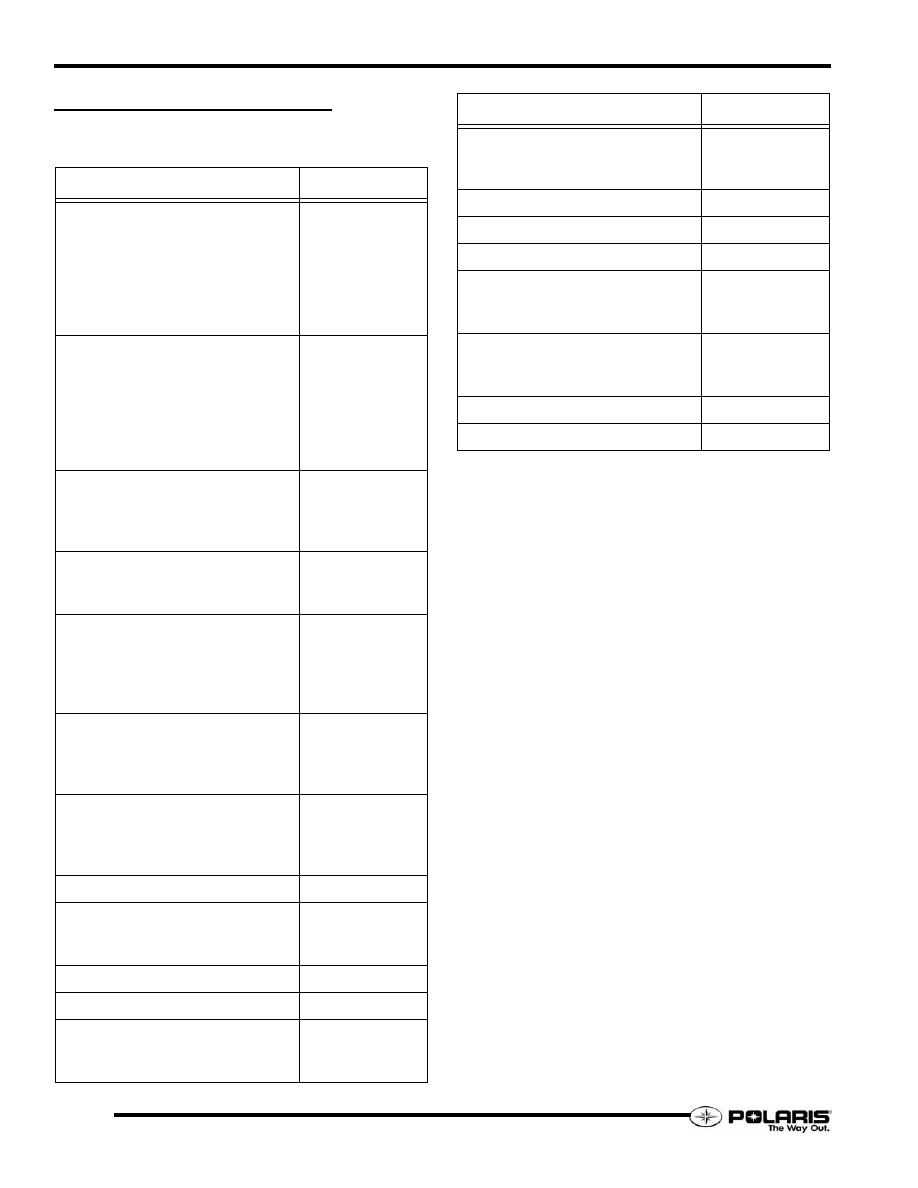Snowmobile Polaris IQ (2007-2008 year). Manual - part 16

3.4
Maintenance
MAINTENANCE PRODUCTS
Engine Oils / Lubricants / Misc.
D
ESCRIPTION
P
ART
N
UMBER
Premium 2-Cycle Oil
Quart
Gallon
2.5 Gallon
16 Gallon
55 Gallon
330 Gallon
2875035
2875036
2874037
2875038
2875039
2875040
VES Gold 2-Cycle Oil
Quart
Gallon
2.5 Gallon
16 Gallon
55 Gallon
330 Gallon
2874438
2874439
2874443
2874440
2874441
2874442
Racing 2-Cycle Oil
Quart
Gallon
16 Gallon
2873025
2873023
2873919
PS-4 4-Cycle 0W-50 Oil
Quart
55 Gallon
2874865
2874867
PS-4 4-Cycle 2W-50 Oil
Quart
Gallon
16 Gallon
55 Gallon
2876244
2876245
2876247
2876246
Synthetic Chaincase Lubricant
Quart
Gallon
2.5 Gallon
2873105
2873106
2872952
Antifreeze 60/40 Premix
Quart
Gallon
55 Gallon
2871534
2871323
2872278
Shock Oil - 5W - Walker Evans
2874522
Shock Oil - Fox
Quart
Gallon
2870995
2872279
Shock Oil - Ryde FX / Arvin
2873716
Brake Fluid - DOT 4
2872189
Fogging Oil
Aerosol
Quart
2870791
2871517
Premium All Season Grease
3oz. Grease Gun Kit
14oz.
2871312
2871423
Starter Grease
2871460
Carbon Clean Plus
2871326
Isopropyl
2870505
Fuel Stabilizer
Quart
2.5 Gallon
2870652
2872280
Cross Shaft Assembly Lubricant
8oz.
2.5 Gallon
2872435
2872436
Three Bond Sealant 5oz.
2871557
Loctite 242
2871950
D
ESCRIPTION
P
ART
N
UMBER